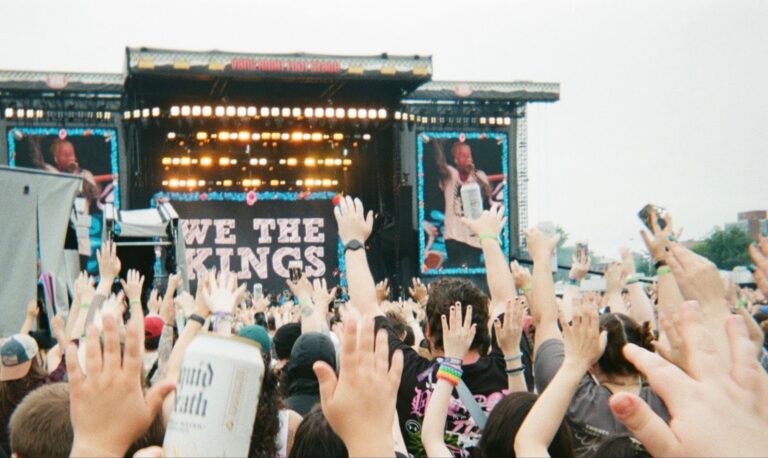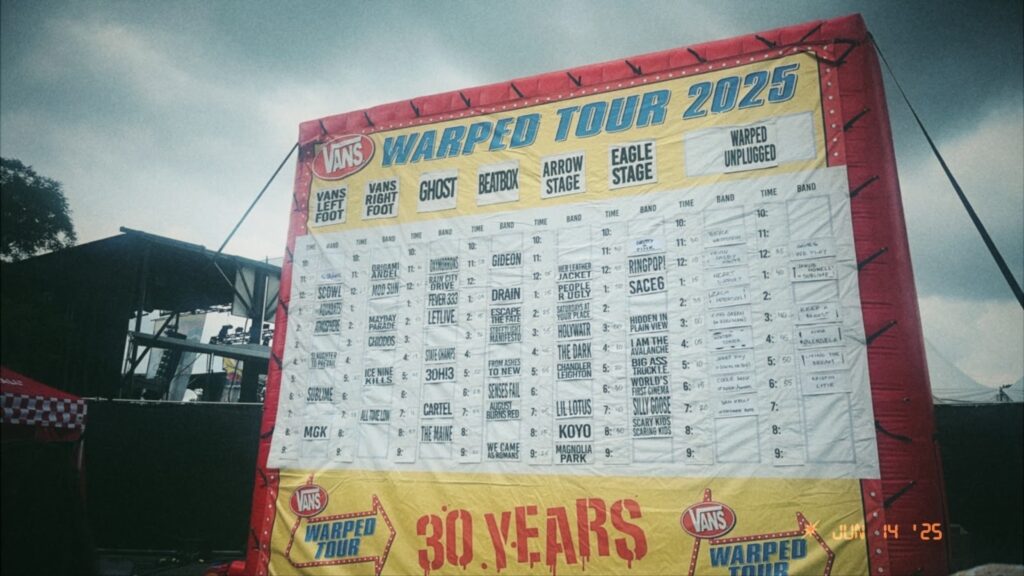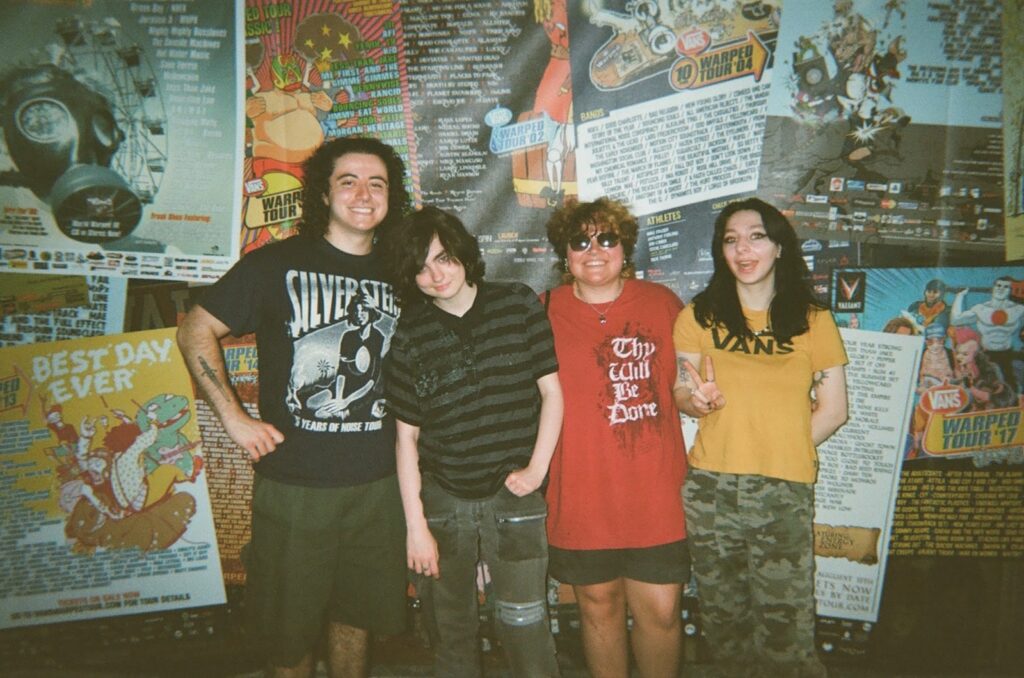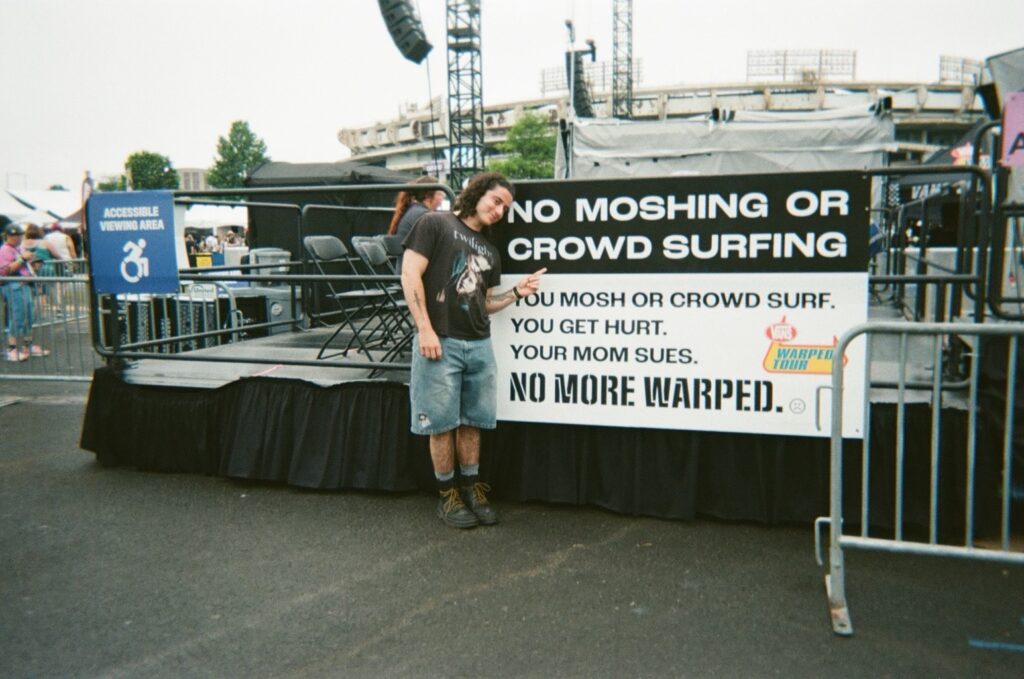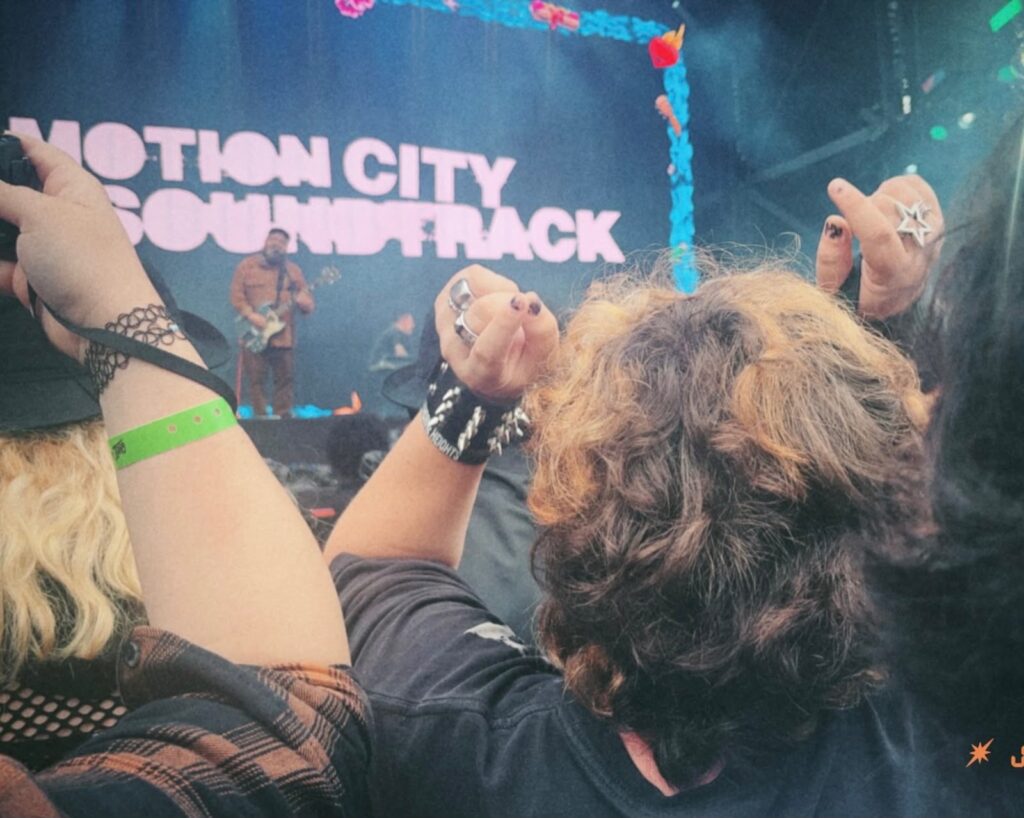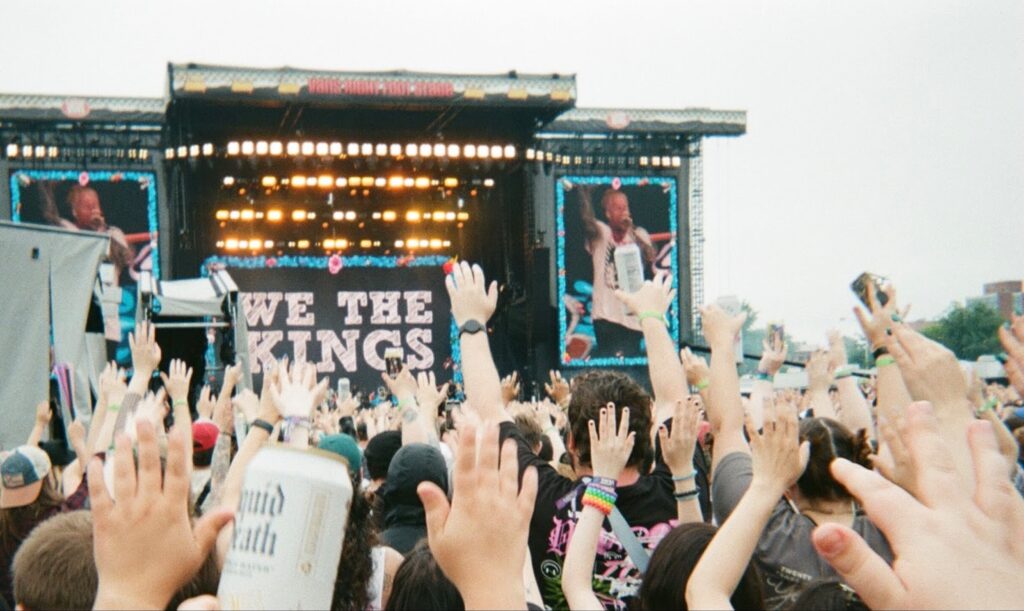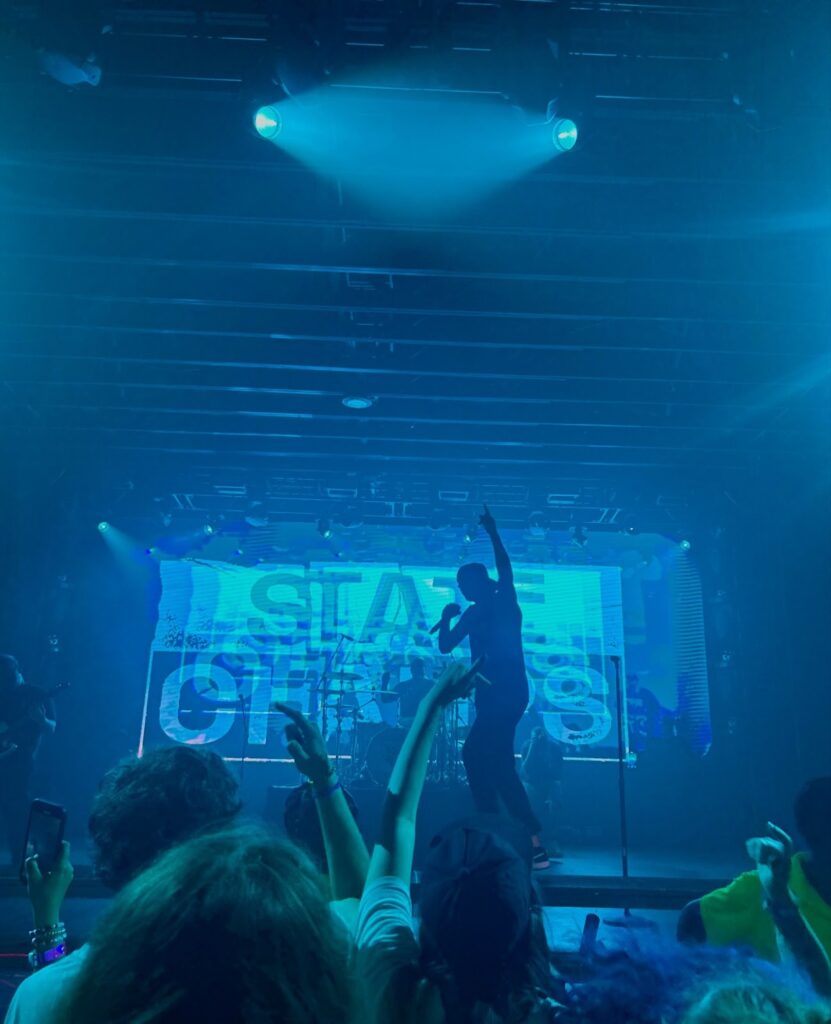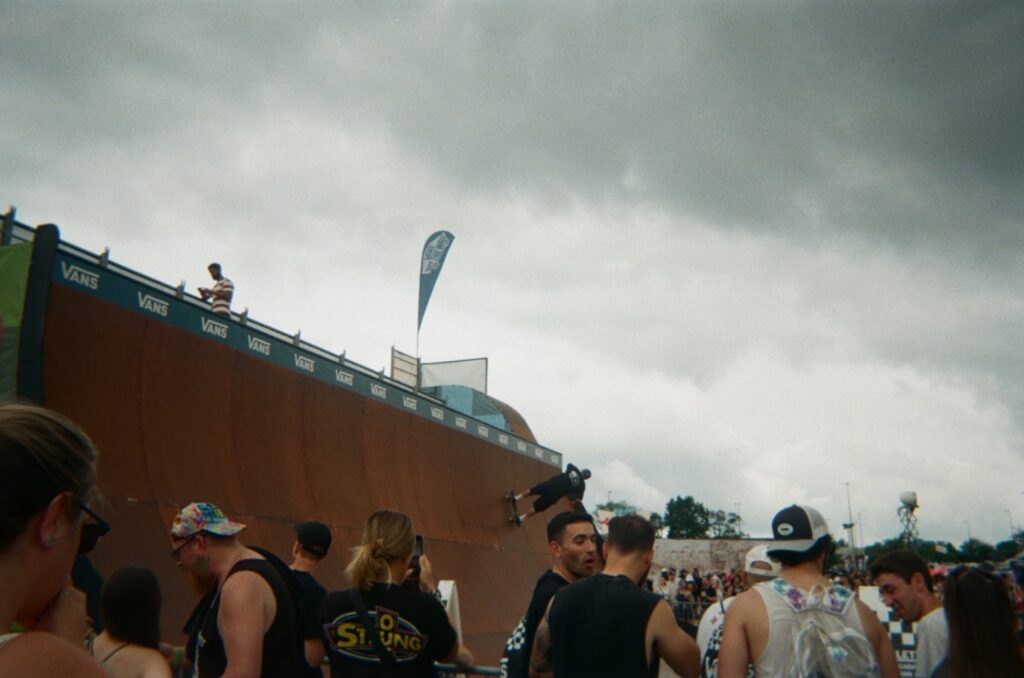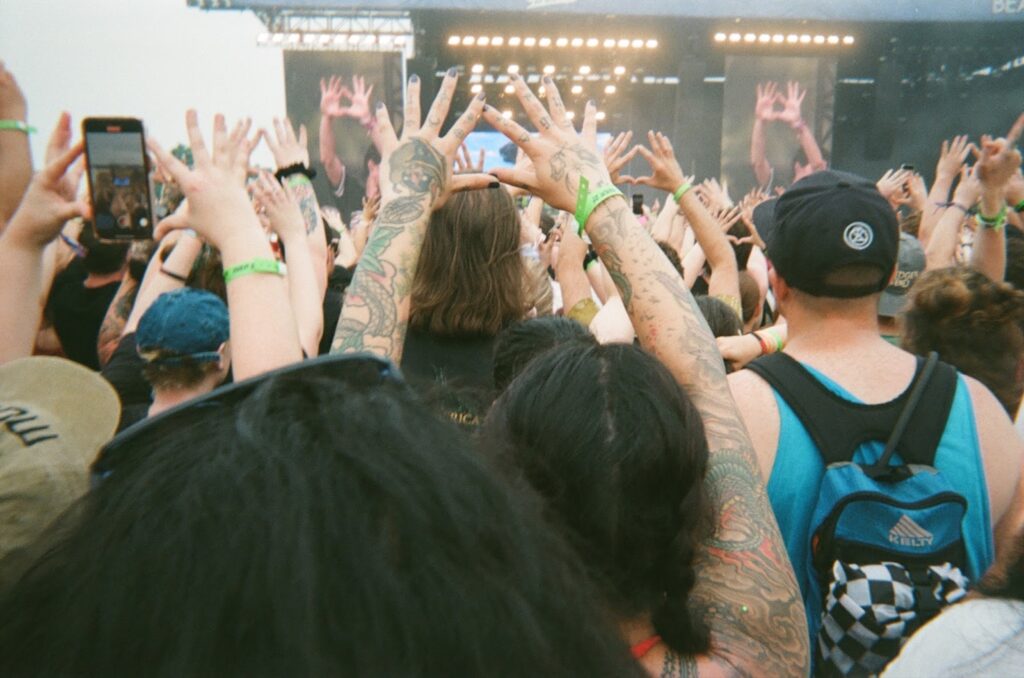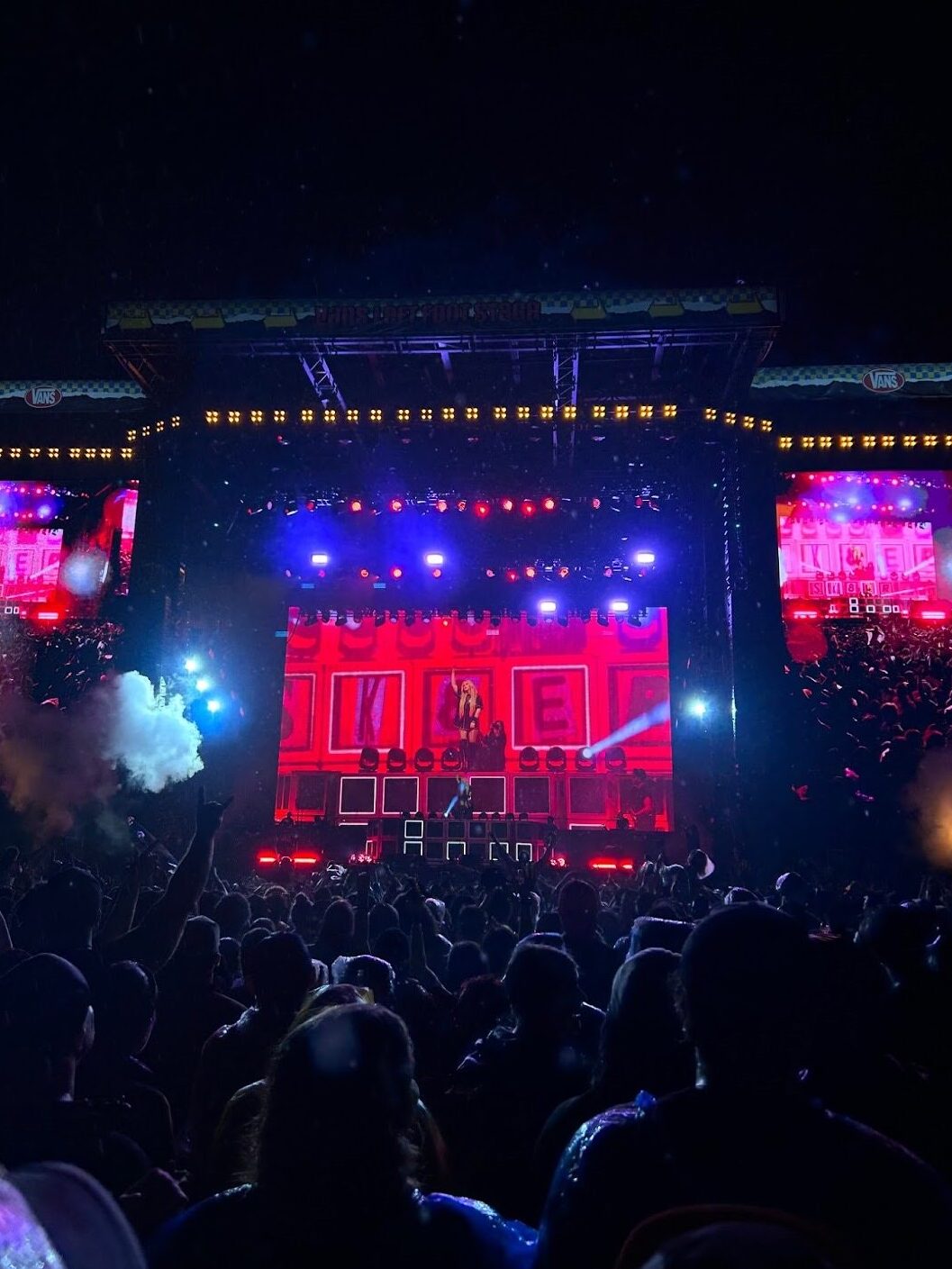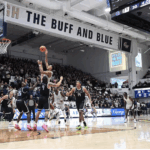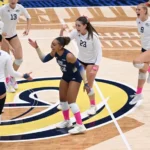June 13th and 14th of this summer brought Warped Tour 2025 to the RFK Campus Grounds. I had frantically purchased tickets to the festival in class, discreetly refreshing Ticketmaster until the “YOU GOT ‘EM” screen lit up my computer. Having previously attended Riot Fest 2025 and Sad Summer Fest, I assumed I knew what kind of alternative-rock extravaganza I would be walking into. For both of those festivals, I meticulously studied the schedules, which stages my favorite bands would be on, and what the most efficient route through the grounds would be in order to maximize the amount of bands my friends and I were seeing. Imagine my confusion when the final week before Warped Tour snuck up on me, and there was absolutely no schedule to be found. Why was no one else freaking out about this? How was I supposed to plan my concert-viewing experience down to the minute? Why was everyone on Reddit talking about “The Inflatable?”
I quickly found out that The Inflatable, the huge blow up schedule in the center of the RFK Campus Grounds, was the only source of information for the locations and timing of every band. This ended up being just one part of Warped Tour that made it more chaotic, unique, and fun than any alternative fest I had ever been to before. I asked my friends to try to describe our time at Warped Tour, and they put my thoughts into words. Thomas, who spent the weekend beelining for every hardcore set he could get to, said, “For an event set in the present day, nothing has felt more energetically nostalgic.” Basil, a passionate emo historian who I trekked with to watch the veteran bands of the scene playing that weekend, called it “a whirlwind of excitement, and a celebration of what came before it.” Jenna, who set her sights on getting barricade for All Time Low, said, “I literally just felt like a giddy child at an amusement park the entire time.” All four of us came to Warped Tour wanting to see different things, and we all got to experience more than we ever anticipated. For me, that weekend reignited something I’d only ever seen through old YouTube videos. To fully understand it, you have to go back to the year that Warped Tour became a defining moment in emo and alternative history.
I discovered Emo music in 2018, otherwise known as the year that the largest annual emo gathering of all time came to an end. Vans Warped Tour was a tour and a festival combined, with hundreds of hardcore, metal, and emo bands playing across the country every summer starting way back in 1995. Looking up the 3 pixel flyers available for the Warped Tours of the past made me more jealous than my 13 year old self could handle, and for almost 8 years, I resigned myself to never experiencing what must have been the greatest and sweatiest celebration of the music I adored this world would ever see. Fast forward to October of last year, when I received an Instagram notification that reawakened the eyeliner-armed 7th grade monster inside of me.
Warped Tour was back.
So why did this announcement make me choke on my Peet’s? What was so impactful about this shoddily organized, controversy-ridden festival? Instead of going through the dozens of A-Listers that have had sets on the tour (including Katy Perry and Eminem), I think the cultural impact Warped had on the music industry can be encapsulated in one singular year of the tour. Without the lineup of emo bands that had been selected for their 2005 festival run, the genre of emo music would be completely unrecognizable. Whether you think that’s a good or bad thing is none of my business, but before you decide, let’s walk through what exactly went down that fateful summer.
Warped tour 2004 was the first indication that the whiny, emotional little brother of hardcore was fighting its way into the mainstream. The tour schedule for that year included two staple emo bands that had just begun their climb up the charts and to commercial relevance, Fall Out Boy and My Chemical Romance. They were sequestered to smaller stages and early sets, and managed to pull in impressive crowds despite their disadvantaged time slots. Though they weren’t drawing the audiences that the headliners of the ’04 tour (NOFX, Bad Religion, and Coheed and Cambria, to name a few), it was clear that an angstier sound was on the horizon of Warped Tour.
Said angst materialized in the form of FOB and MCR’s breakout albums, released in 2004 and 2005 respectively. “From Under The Cork Tree” and “Three Cheers for Sweet Revenge” dropped like bombs on the Hot 100, and music videos for “Sugar We’re Going Down” and “Helena” became MTV staples. Before you could say “MySpace,” both bands were the headliners for Warped Tour 2005. Emo music had made it to the mainstream, and the budding world of social media was fueling the fire. The 2005 lineup still had an impressive amount of variation, with metal band Avenged Sevenfold playing alongside pop punk god Travis Barker (who was then drumming for Transplants). Oh, and Billy Idol was there too. I know, I’m not sure why either.
The poetic lyrics and melancholic vocals of these two bands were reflected in the fans, to the chagrin of many older, more traditionally hardcore bands. Hordes of middle-aged crowd killers were replaced by teenagers with violently side-swept fringes. Lead singer of Dropkick Murphy’s Al Barr summed up the general attitude towards Fall Out Boy and My Chemical Romance when he admitted that at the time, he exclusively referred to them as “Fall Out Turds” and “My Chemical Shit Pants.” So, who prevailed in the battle between old and new alternative music that summer? Unfortunately for Barr, emo had won the war before the first guests even stepped into the festival. Alongside MCR and FOB, other soon-to-be staple emo bands were filling out the rest of the lineup. Silverstein, All American Rejects, Motion City Soundtrack, Senses Fail, The Academy Is…, and Gym Class Heroes all had sets on smaller stages, each pushing Warped Tour towards a new era.
In 2005, the festival was not just welcoming in a brand new sound, it was finally breaking barriers for woman fronted bands to have a space in the alternative scene. In 2004, the girl group Shiragirl famously “crashed” Warped tour with the Shiragirl Stage, converting a box truck into a bright pink stage that they drove to the festival grounds and performed a full set on. Creator of Warped Tour, Kevin Lyman, invited them to finish the rest of the 2004 cycle as an official part of the lineup. By 2005, the Shiragirl stage was an official part of Warped Tour, featuring exclusively woman fronted bands that had previously been overlooked by the festival and many others like it. Notable all-girl bands that performed in 2005 included Tsunami Bomb and Go Betty Go, who set the stage (literally!) for 300 more girl groups to perform in the following years of Warped Tour.
The breakout star of the Shiragirl stage, besides Shiragirl themselves, was a pop-punk inspired band that had just signed to Fueled by Ramen Records. Paramore, led by frontwoman Hayley Williams, garnered unprecedented crowds and a hugely positive reception for their debut album “All We Know is Falling,” released during Warped Tour. The album set Paramore up for mainstream success and an incredible future discography, and put a woman fronted band in the spotlight of a genre that had been dominated by men for years. Women in emo and alternative music were consistently viewed as the exception, and the debut of the Shiragirl stage in 2005 finally introduced a space for them to be embraced as essential components of Warped Tour and the emo scene as a whole. Women fronted bands were actively influencing the future of emo, and giving it life beyond the same handful of male voices that had populated the genre and festival in years prior. The Shiragirl stage was a reminder that emo music could be bigger, more inclusive, and more exciting than it had ever been before.
To me, 2005 proved that Warped Tour will always be more than a sweaty parking lot festival. In 2005, bands that were previously unheard of blew up, and brand new (impressively high pitched) voices kicked down the gates of a scene that liked to pretend it would be underground forever. The return of the tour this summer served as a reminder of how much it mattered to both long-time veterans of the scene and to kids like me, who only knew it from two-pixel YouTube clips. For all the gatekeepers who once turned their noses up at bands like Fall Out Boy, My Chemical Romance, or Paramore, it’s clear that the music industry and the rapidly expanding alternative scene had other plans. Emo wasn’t ruined because kids in skinny jeans replaced forty-year-old hardcore guys with shaved heads; it evolved to reflect a changing music industry and a new wave of fans. Warped Tour’s return is proof that new sounds and crowds keep the scene alive, and that nothing says ‘alternative’ like refusing to stay the same.

